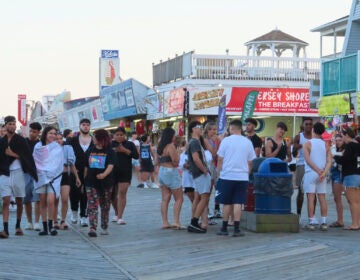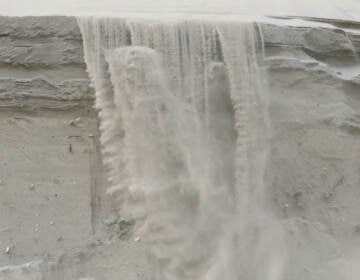Lifting spirits by painting murals on raised Jersey Shore houses
Since Superstorm Sandy, hundreds of homes have been elevated to avoid future flooding. Shore towns do not want future streetscapes to be concrete footings.
Listen 2:00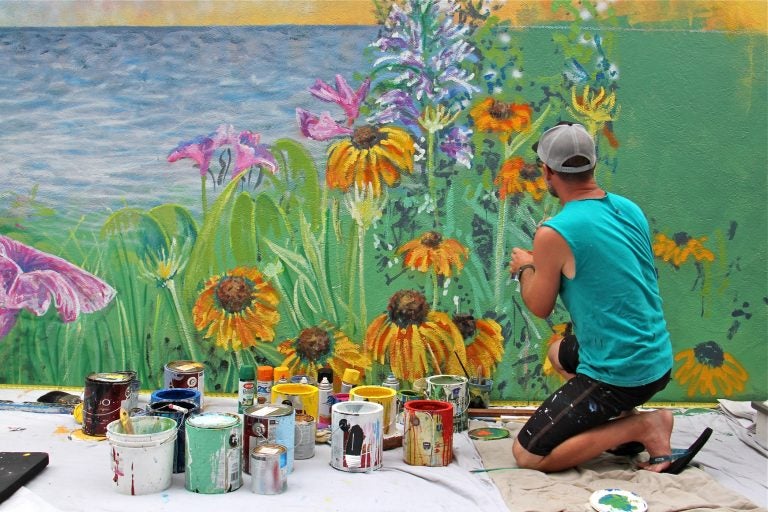
Philadelphia artist Charles Barbin covers a cinderblock wall with a seascape mural at the home of Rose Ann Cahill in Ventnor. The bayside home was raised 8 feet after it was damaged by Superstorm Sandy. (Emma Lee/WHYY)
Rosanne Cahill has lived on the bay side of Ventnor, New Jersey, for 49 years. After Superstorm Sandy hit in 2012, she and her husband raised their house 8 feet.
“Took about three years after Sandy hit,” said Cahill, a retired school librarian. “We had 38 inches of water in the house.”
Their newly raised home suddenly had a garage, a larger backyard, and a covered area into which an above-ground Jacuzzi should slip. The cinder block elevation was seamlessly covered with gray vinyl siding matching the rest of the house.
Not long after, a greater tragedy struck: Cahill’s husband, Daniel, the town’s retired fire chief, was working on the side of the house and fell off a ladder, landing in the concrete backyard. He didn’t survive.
“When my husband was killed, I couldn’t be in this yard anymore,” she said. “It was too sad for me.”
A few months ago, Cahill learned about Philadelphia muralist Charles Barbin, who markets himself as an artist who paints raised homes.
“I gave him a call to try to make it a happy place again,” she said. “He’s my go-too happy guy.”

In Philadelphia, Barbin is a member of the Amber Art and Design collective, often making socially conscious works in public places. He grew up at the Shore in Brigantine, just a few miles from Ventnor, where people tend to gravitate to scenes of the beach and flowers.
“It’s what we like around here,” he said. “It’s what’s familiar.”
For Cahill, Barbin painted a mural about 20 feet long of dense foliage against a background of the sunrise over the ocean horizon. It’s rich with pale yellows and deep greens. The sky is shot through with pink.
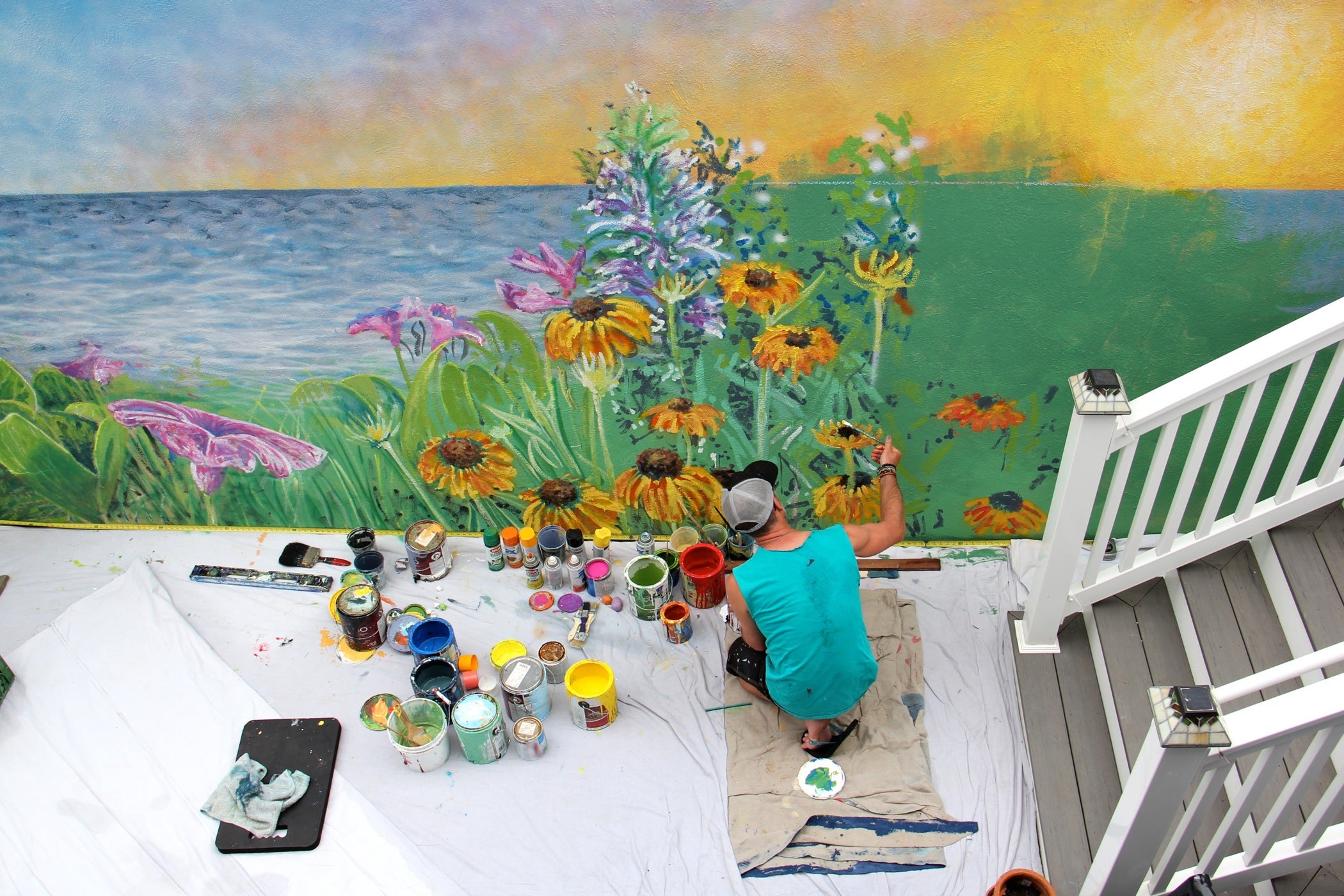
“Being able to paint a sunset and flowers and all those elements results in amazing colors,” said Barbin. “Colors that stimulate all parts of your mind and insinuate some happy emotions.”
Beautifying the lower part of her home was something Rosanne Cahill needed to do, emotionally. Now, Atlantic County requires it. So many homes have been lifted because of flooding, and the results can be ugly.
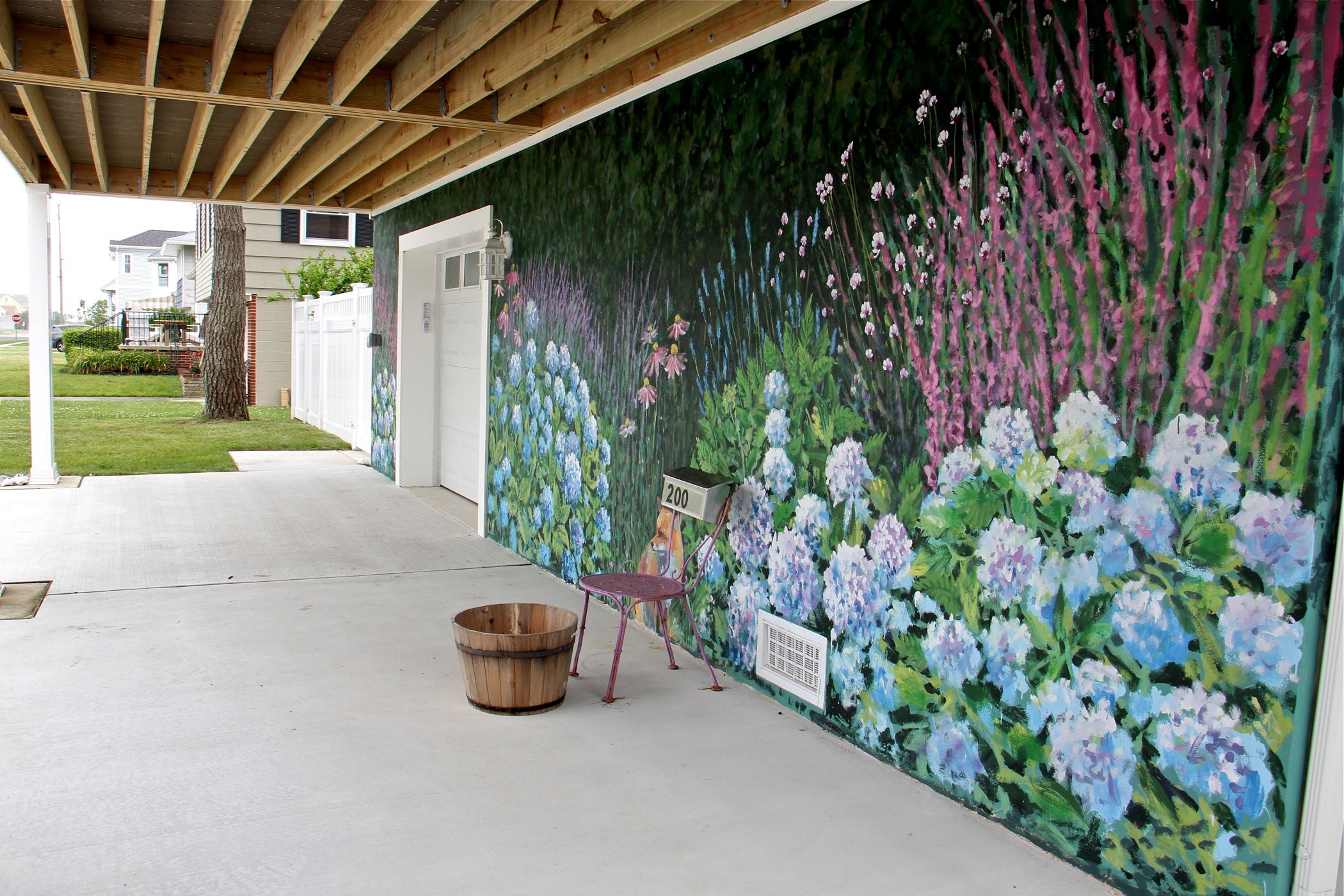
The cost of raising a house can range from $30,000 to $150,000, depending on the size and the lot. Afterward, the house can be left with bleak walls of gray cinder block or concrete pilings at the street level.
Some municipalities, including Ocean City, have written addendums into their master development plans to make sure homes elevated above flood levels look happy, so they don’t mar the streetscape with offending footings.
This is Barbin’s second raised house mural of what he hopes will be many more. His first was in his hometown, Brigantine, where a homeowner asked him to paint a wrap-around mural of a forest scene. The front of the house features an eye-catching glimpse of a fox.
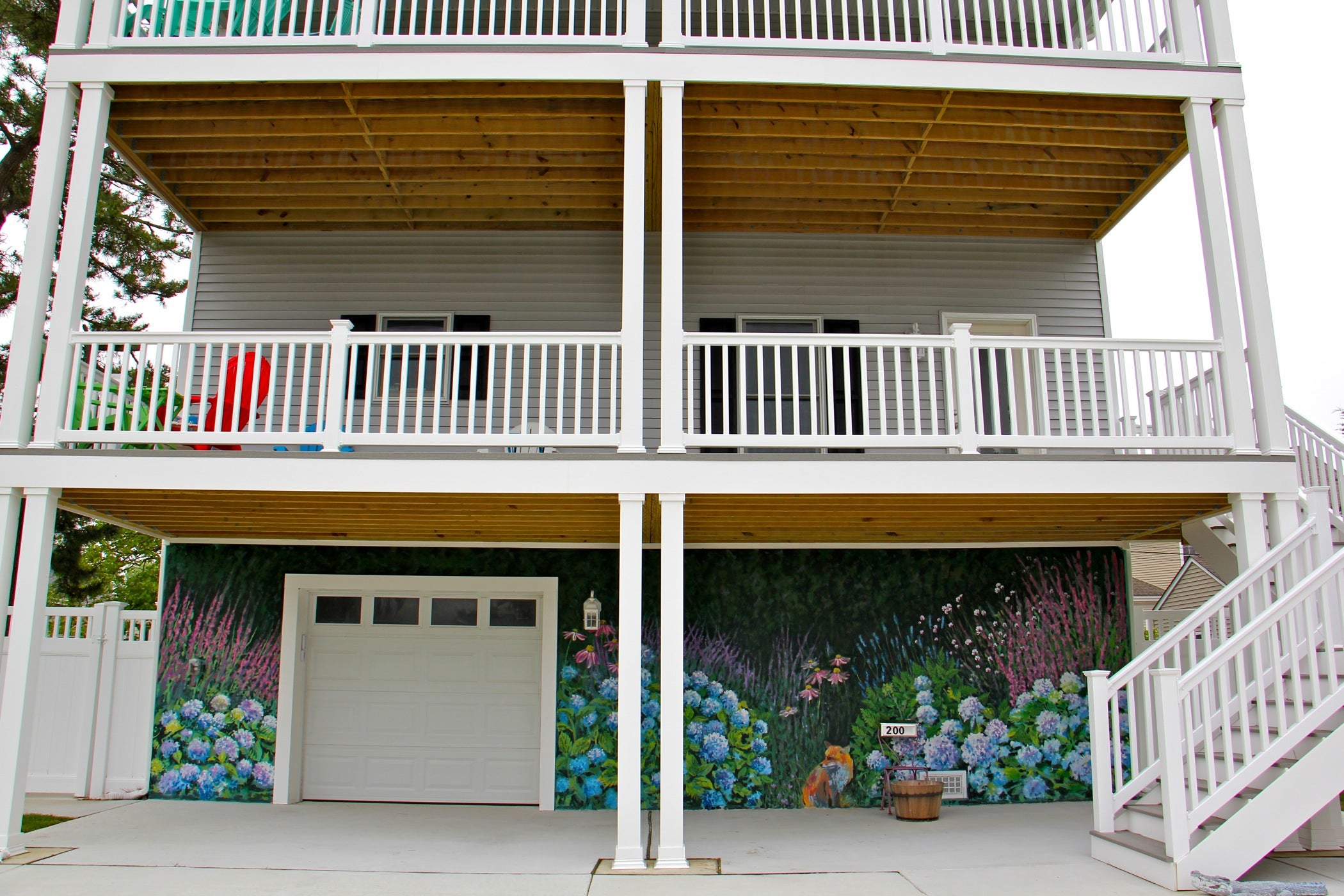
Painting, alone, often will not satisfy requirements to screen the offending footings. Towns are asking for something more architecturally substantial, like fencing, siding, or a breakaway wall.
“I’m definitely not the only solution, but I thought this was an idea that could be incorporated with stone work, with mosaics, with trees and bushes,” said Barbin. “This is an option to have, where I saw a blank canvas on all these walls.”
Barbin actually prefers to paint abstractly — in pure color and pattern — rather than creating seascapes. In addition to being more artistically satisfying, he says graphic design would be faster and more cost effective to the homeowner than flowers in sunlight.
WHYY is your source for fact-based, in-depth journalism and information. As a nonprofit organization, we rely on financial support from readers like you. Please give today.



